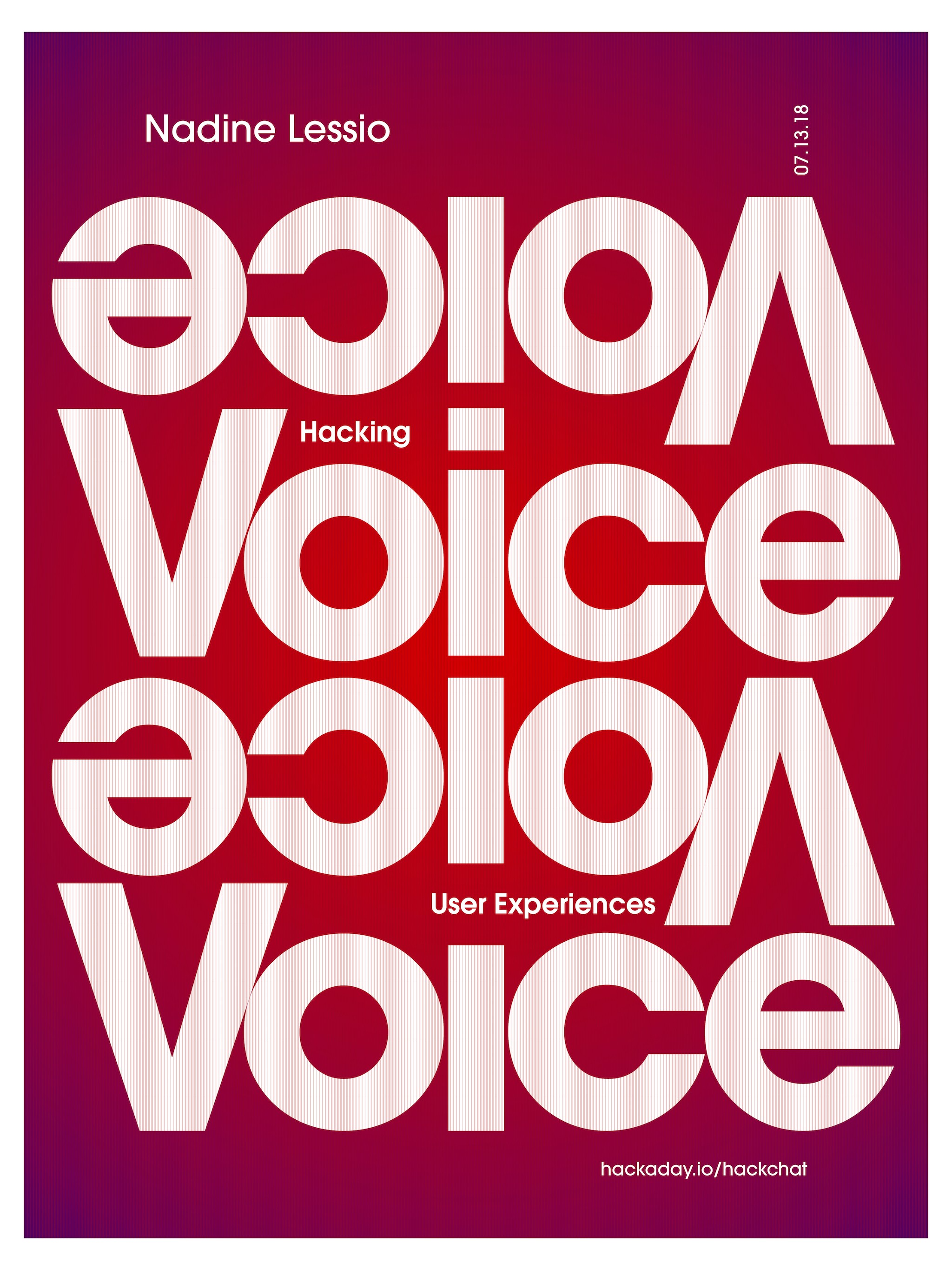Nadine Lessio will be hosting the Hack Chat on Friday, July 13, 2018 at noon PDT.
Time Zones got you down? Here's a handy time converter!

Nadine Lessio is a designer and technologist based out of Toronto, Canada with a background in visual design, and DIY peripherals. Nadine holds an MDes from OCADU where she spent her time investigating the Internet of Things through personal assistants. Currently she works at OCADUs Adaptive Context Environments Lab where she’s researching how humans and devices work together. By mixing development, humour, and criticism, Nadine’s work considers the interplay between technology and life, sometimes with amusing or unexpected results.
Twitter: https://twitter.com/_nadine
Hackaday Profile: https://hackaday.io/sharkwheels
__________________
We’re going to be talking about experimenting with personal assistants and voice user interfaces. As devices like Alexa and Google Home become more prolific what are some ways to play with speculative ideas around agency or a device's possible internal motives? What are some interesting interactions that can be done with them, and what are some of the challenges faced in trying to do creative things with these devices?
Nadine will be answering the questions:
- What languages do you use to program voice UIs?
- How do you use voice and hardware together?
- What do you consider when designing for a voice UI?
- How do voice UI's interface with Arduinos, raspberry pis, and other common electronics platforms?









Any ideas or tips about doing voice recognition locally, without any internet connectivity?